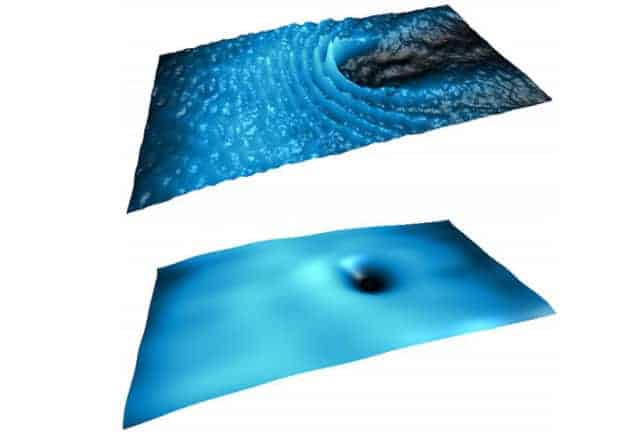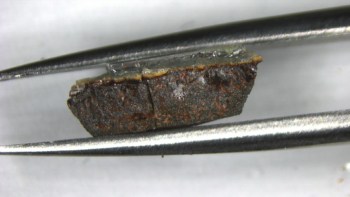
The superfluid-like behaviour of a condensate of polaritons at room temperature has been seen for the first time by researchers in Italy and Canada. Until now, such behaviour had only been observed at very low temperatures. As well as allowing physicists to study macroscopic quantum phenomena under ambient conditions, the research could be exploited in the development of photonic circuits that use light to process information.
Superfluidity – the flow of liquid without any friction – was first observed in ultracold liquid helium in 1938. Such a superfluid liquid can creep up along the walls of a container, boil without bubbles and even flow around obstacles. Shortly after the discovery, the physicist Fritz London suggested that there might be some sort of link between a superfluid and a Bose–Einstein condensate (BEC) – the latter being a state of matter in which all constituent particles have condensed into a single quantum state. He was proved right in 1995 when superfluidity was observed in BECs made from ultracold atoms.
To date, however, superfluidity and BECs have only been observed at very low temperatures. A team led by Daniele Sanvitto of the CNR NANOTEC in Leece, Italy, and Stéphane Kéna-Cohen of the Polytechnqiue Montréal in Canada has now shown that a condensate of quasiparticles called polaritons can behave as a superfluid at room temperature.
Flowing around obstacles
The sample studied by the team consists of a Fabry–Pérot microcavity made up of two highly reflective dielectric mirrors surrounding a thin film of organic material called TDAF. This set-up confines photons in a small volume. Electrons and holes can form bound states called excitons even at high temperatures in TDAF. The photons interact with the excitons so strongly in the microcavity that they form particle-like excitations called polaritons.
By making use of a very fast detection technique that can take one image about every 10 fs, the researchers were able to observe the collective dynamics of the polaritons. They found that the polaritons behave like a fluid that can flow without friction around obstacles, which were formed by using a laser to burn small holes in the organic material. This is interpreted by the researchers as being a signature of the superfluid behaviour.
Photonic counterparts to electronic devices
“The fact that such an effect has been observed under ambient conditions means that such condensate fluids can now be studied with table-top experiments in a simple device no bigger than a finger nail,” Sanvitto says. “The specific dynamics of these fluids (also called quantum fluids) could now be revealed and observed without the need for special equipment and experimental conditions.”
Referring to possible technological uses of the polariton superfluid, Kéna-Cohen says: “In the future, devices made of such quasiparticles composed of half-light and half-matter, which have a very low mass, might be used to transport information with zero losses and zero heating.” Indeed he says that one of the most interesting applications of polaritons is their use as possible photonic counterparts to electronic devices such as switches, gates and transistors.
The team is now looking at how to make devices in which photons can be better confined and stay confined for longer periods of time. “This will be essential for making future viable and realistic technologies based on polariton condensates,” says Sanvitto.
The research is described in Nature Physics.



